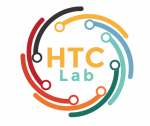Research work involves open-ended problems where it’s very difficult to predict the required steps in advance. You can’t hardcode a fixed path for exploring complex topics, as the process is inherently dynamic and path-dependent. When people conduct research, they tend to continuously update their approach based on discoveries, following leads that emerge during investigation.
This unpredictability makes AI agents particularly well-suited for research tasks. Research demands the flexibility to pivot or explore tangential connections as the investigation unfolds. The model must operate autonomously for many turns, making decisions about which directions to pursue based on intermediate findings. A linear, one-shot pipeline cannot handle these tasks.
The essence of search is compression: distilling insights from a vast corpus. Subagents facilitate compression by operating in parallel with their own context windows, exploring different aspects of the question simultaneously before condensing the most important tokens for the lead research agent. Each subagent also provides separation of concerns—distinct tools, prompts, and exploration trajectories—which reduces path dependency and enables thorough, independent investigations.
Once intelligence reaches a threshold, multi-agent systems become a vital way to scale performance. For instance, although individual humans have become more intelligent in the last 100,000 years, human societies have become exponentially more capable in the information age because of our collective intelligence and ability to coordinate. Even generally-intelligent agents face limits when operating as individuals; groups of agents can accomplish far more.
Our internal evaluations show that multi-agent research systems excel especially for breadth-first queries that involve pursuing multiple independent directions simultaneously. We found that a multi-agent system with Claude Opus 4 as the lead agent and Claude Sonnet 4 subagents outperformed single-agent Claude Opus 4 by 90.2% on our internal research eval. For example, when asked to identify all the board members of the companies in the Information Technology S&P 500, the multi-agent system found the correct answers by decomposing this into tasks for subagents, while the single agent system failed to find the answer with slow, sequential searches.
Multi-agent systems work mainly because they help spend enough tokens to solve the problem. In our analysis, three factors explained 95% of the performance variance in the BrowseComp evaluation (which tests the ability of browsing agents to locate hard-to-find information). We found that token usage by itself explains 80% of the variance, with the number of tool calls and the model choice as the two other explanatory factors. This finding validates our architecture that distributes work across agents with separate context windows to add more capacity for parallel reasoning. The latest Claude models act as large efficiency multipliers on token use, as upgrading to Claude Sonnet 4 is a larger performance gain than doubling the token budget on Claude Sonnet 3.7. Multi-agent architectures effectively scale token usage for tasks that exceed the limits of single agents.
There is a downside: in practice, these architectures burn through tokens fast. In our data, agents typically use about 4× more tokens than chat interactions, and multi-agent systems use about 15× more tokens than chats. For economic viability, multi-agent systems require tasks where the value of the task is high enough to pay for the increased performance. Further, some domains that require all agents to share the same context or involve many dependencies between agents are not a good fit for multi-agent systems today. For instance, most coding tasks involve fewer truly parallelizable tasks than research, and LLM agents are not yet great at coordinating and delegating to other agents in real time. We’ve found that multi-agent systems excel at valuable tasks that involve heavy parallelization, information that exceeds single context windows, and interfacing with numerous complex tools…
anthropic.com/engineering/built-multi-agent-research-system
- How we (Anthropic) built our multi-agent research system - July 1, 2025
- Automatic Large Language Models Creation of Interactive Learning Lessons - June 29, 2025
- AI as Governance - June 29, 2025
